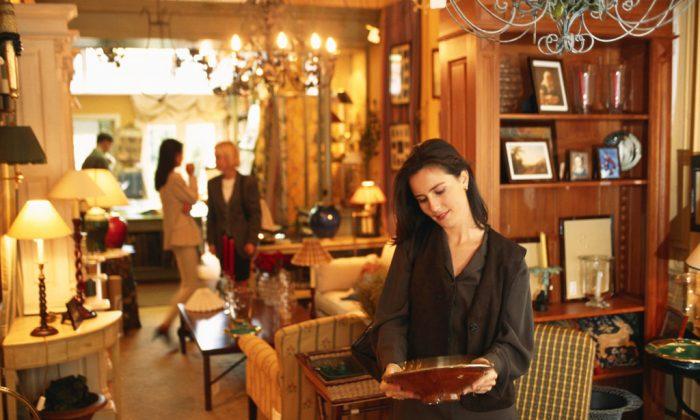Fads in collecting come and go generation after generation. If you are fortunate to live long enough, you will experience the trends and see that “what goes around comes around.” Although the quote is meant for karma in life, it applies to what we purchase for our homes.
My senses are drowning with nostalgia these days as I see the mid-century modern prices rise to unexpected heights all the while 18th century English and Continental furniture is deemed “not in style.” Likewise, contemporary and modern art prices are soaring as beautiful “old” canvases are “out of style.”
I thought it would be interesting to go back and talk to some of my former and current clients about their feelings of what is happening today. Regrettably, a few of them have passed away but the majority of my long-term clients are now 60 to 90 years old.
I have thankfully recently acquired as clients a new couple in their 30s who understand quality. They need information, instruction, and training to make the right decisions if they are to collect. Most of all, they need to understand history. I shudder to think that I may pass on before I see their final collection, but if I can share some knowledge with them, my hopes are that they absorb it like a sponge.
A Cautionary Tale
Today, I am sharing with you the experience of an heir of an antiques and design client of mine. She (the heir) was uninformed and had no appreciation for her mother’s collection. Her actions, which became known in the community, set off a wise course of action by two of my most treasured clients, which included the sister of the deceased.
Because the young heir lived out of state, she was impatient and made arrangements with the attorney handling her mother’s estate to get things sold as quickly as possible. This led to the custom-built French style house being priced way below market value. It was full of beautiful chandeliers, sconces, French paneling, antique mantels, antique flooring, and even an 18th century tile roof.
The attorney hired a “favorite” realtor to list the house and another “favorite” was hired as an estate sale expert. Together these two women made a quick sale happen, the new owner of the house was very fortunate, those who attended the sale were ecstatic, and the heir went to the bank with much less than she could have had. Tragically, the local museum was left empty-handed!
Living out of state at the time, I received a phone call from a well known art dealer in London who asked if I knew a lady, whom I shall call “Mrs. S,” who had phoned him inquiring about a painting being offered at this sale.
When I told the dealer of our client’s death he instructed me to phone the heir and let her know he wished to buy back the painting at what the deceased paid for it. I phoned the young heir, gave her the information, to which she responded she would let the estate sale people handle these transactions.
The dealer was never called and “Mrs. S” now has a painting, which she purchased way below market value. All the contents were sold from that home and I wince at the prospects that the art and antiques were sold for ridiculous prices to buyers who had no clue.
Doing It Right
Since then, I was hired by the sister of the deceased party, who had been one of my best clients, to research and catalog her inventory of art and antiques beyond the details provided to her from invoices by my firm and other dealers.
Two copies of the books have been made. Her estate attorney has one copy of the books and she has the other. One of her children will use the books upon her death as a guide. My client has left instructions with the estate attorney that not one item in that catalog can be sold without proper research for the best price.
Yet another client does not intend for her only heir to be ripped off and the heir has met with me on two occasions for a history lesson about what is in that house. She has arranged for her grandson and attorney to rely on me to help guide them with the sale of any item. We have already made provisions for a museum to have some of the possessions.
I share this with you because unfortunately, now we have a generation of inexperienced heirs who have no idea about the stewardship of inheriting valuable art and antiques. They are intrigued with their own ideas of what they want to fill their homes with. However, it is a travesty to lose the historical significance of the art and decorative arts in the collections left to them.
Those of you who share the passion and appreciate that we are but stewards of our fine collections for a short period of time should be certain you have made the right provisions for your estates.
This article appeared first on AAD, www.art-antiques-design.com.

Mary Helen McCoy’s firm, located in Memphis, Tenn., sources and delivers fine and unusual, period, 17th–19th century, French furniture, and decorative arts: maryhelenmccoy.com


